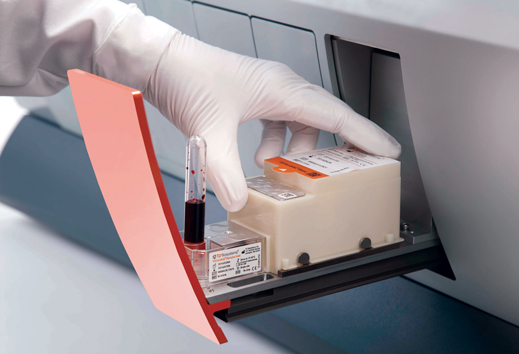Hospitals are beginning to use a new, more potent weapon against sepsis, the devastating condition that kills more than 25 percent of its victims and costs hospitals billions of dollars annually. In the U.S. alone, more than a million people become infected each year, and it contributes to as many half of all deaths in hospitals.
Last fall, the U.S. Food and Drug Administration approved the new technology, developed by T2 Biosystems, for diagnosing sepsis caused by a fungus called Candida. Several hospitals have begun deploying T2’s Candida-detection system, which is based on the same physical principle behind magnetic resonance imaging. By the end of this year the company aims to have 30 hospitals signed on to purchase and use the technology….
The T2MR detector works by measuring changes in the magnetic properties of the water molecules in the sample. After some processing steps, magnetic nanoparticles, equipped on their surface with strands of DNA complementary to strands in the target pathogen, are mixed with the sample. If a given target is present, the particles will attach to it and cluster, causing changes in the magnetic properties of the water molecules in the sample. Applying magnetic pulses elicits a response from those molecules, called T2 relaxation, and by measuring the change in this signal, the device automatically determines whether or not a given bug is present…
Source: MIT Technology Review




